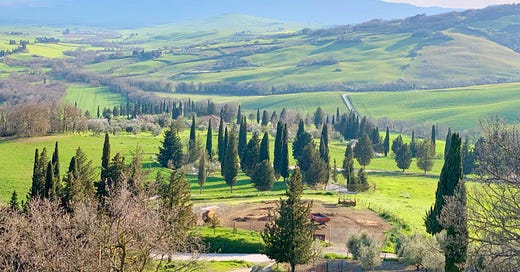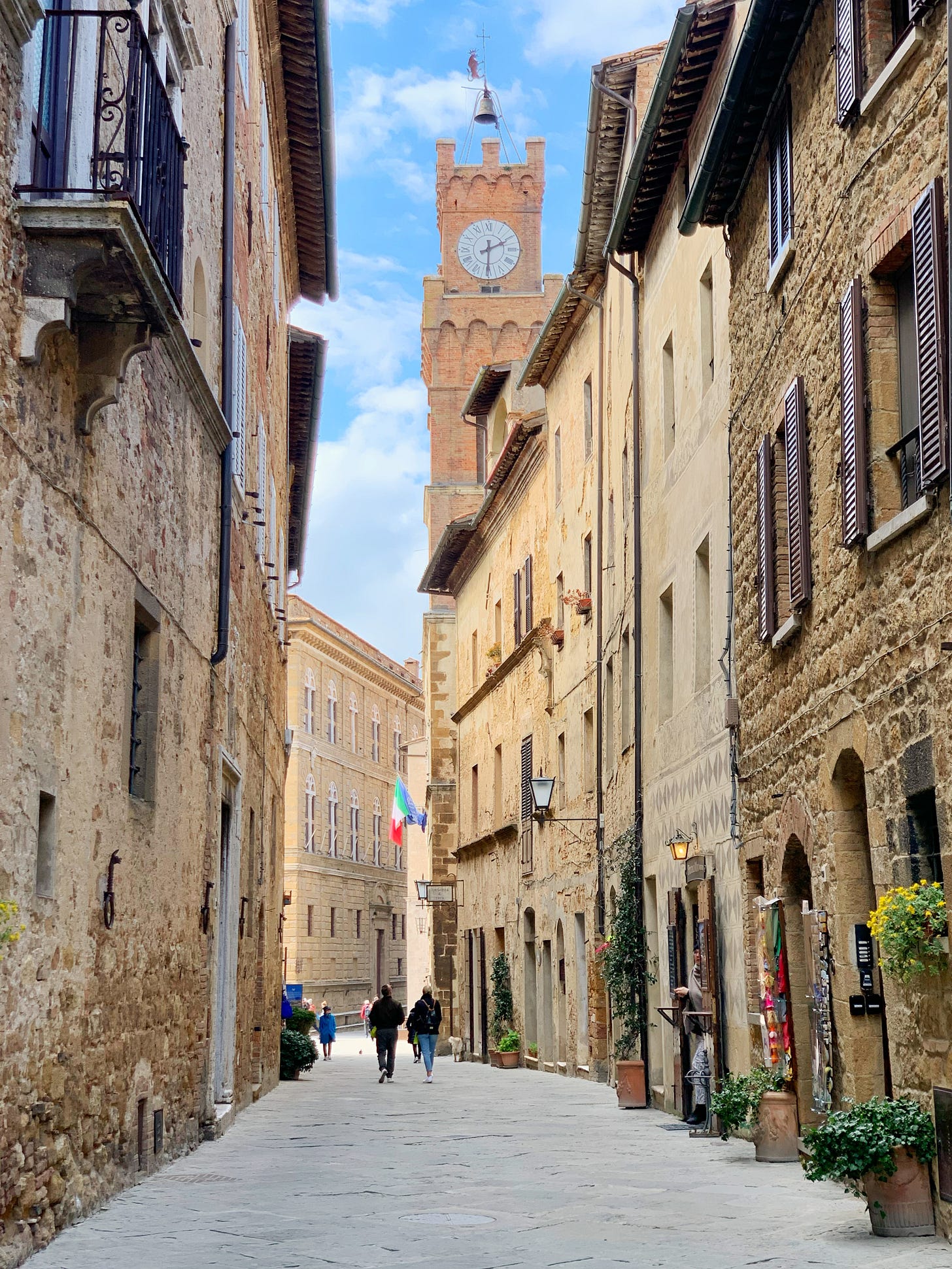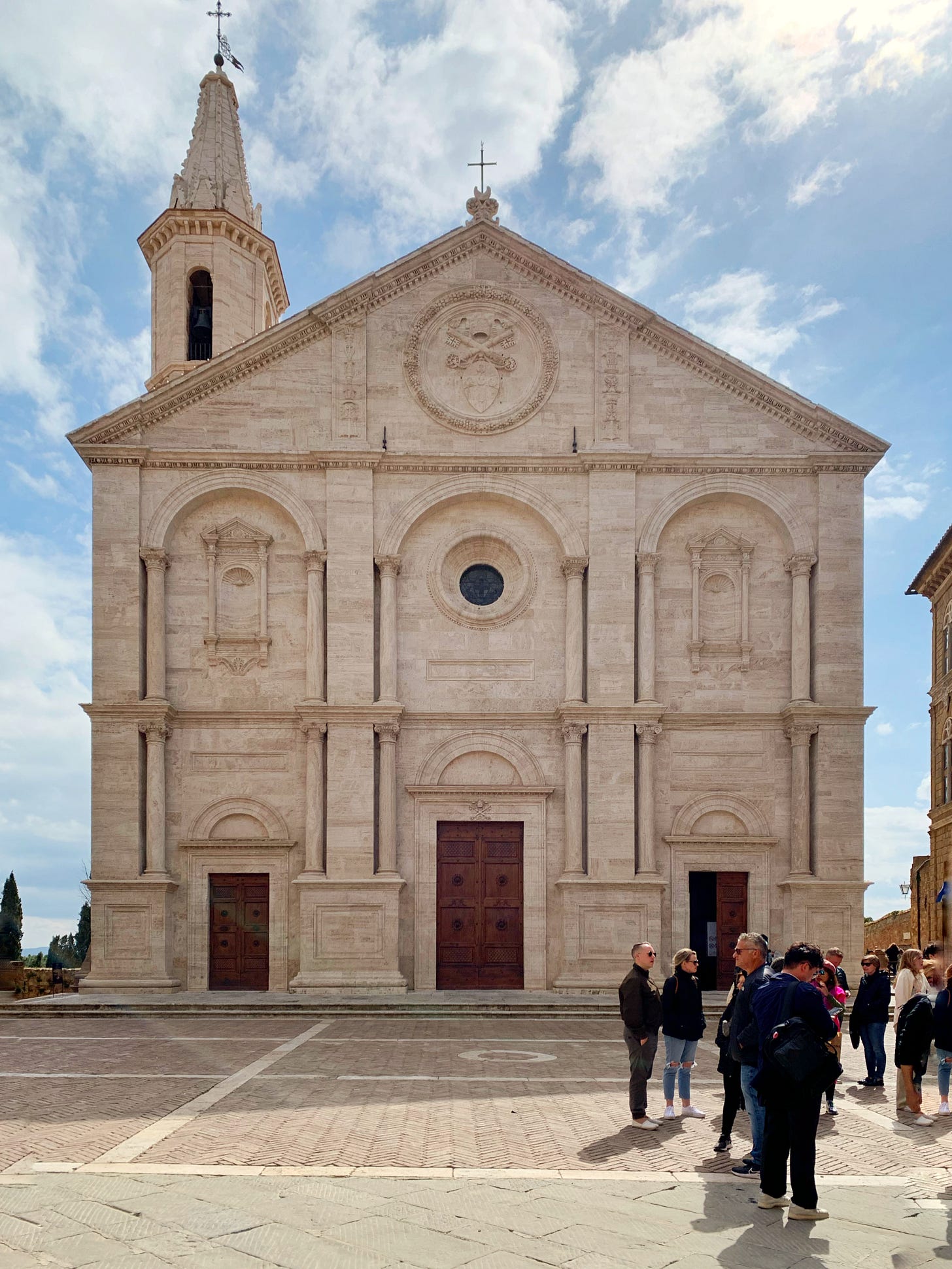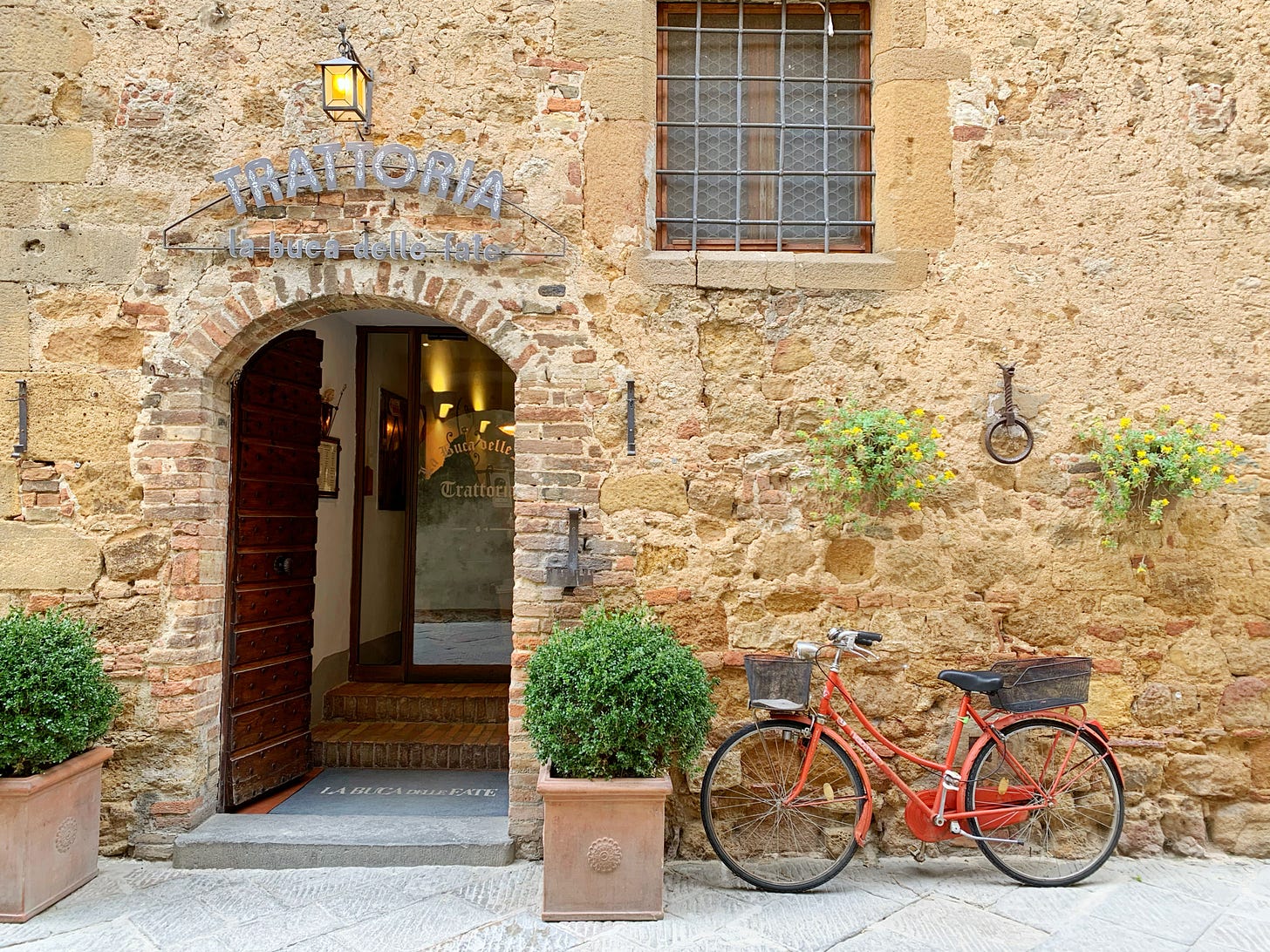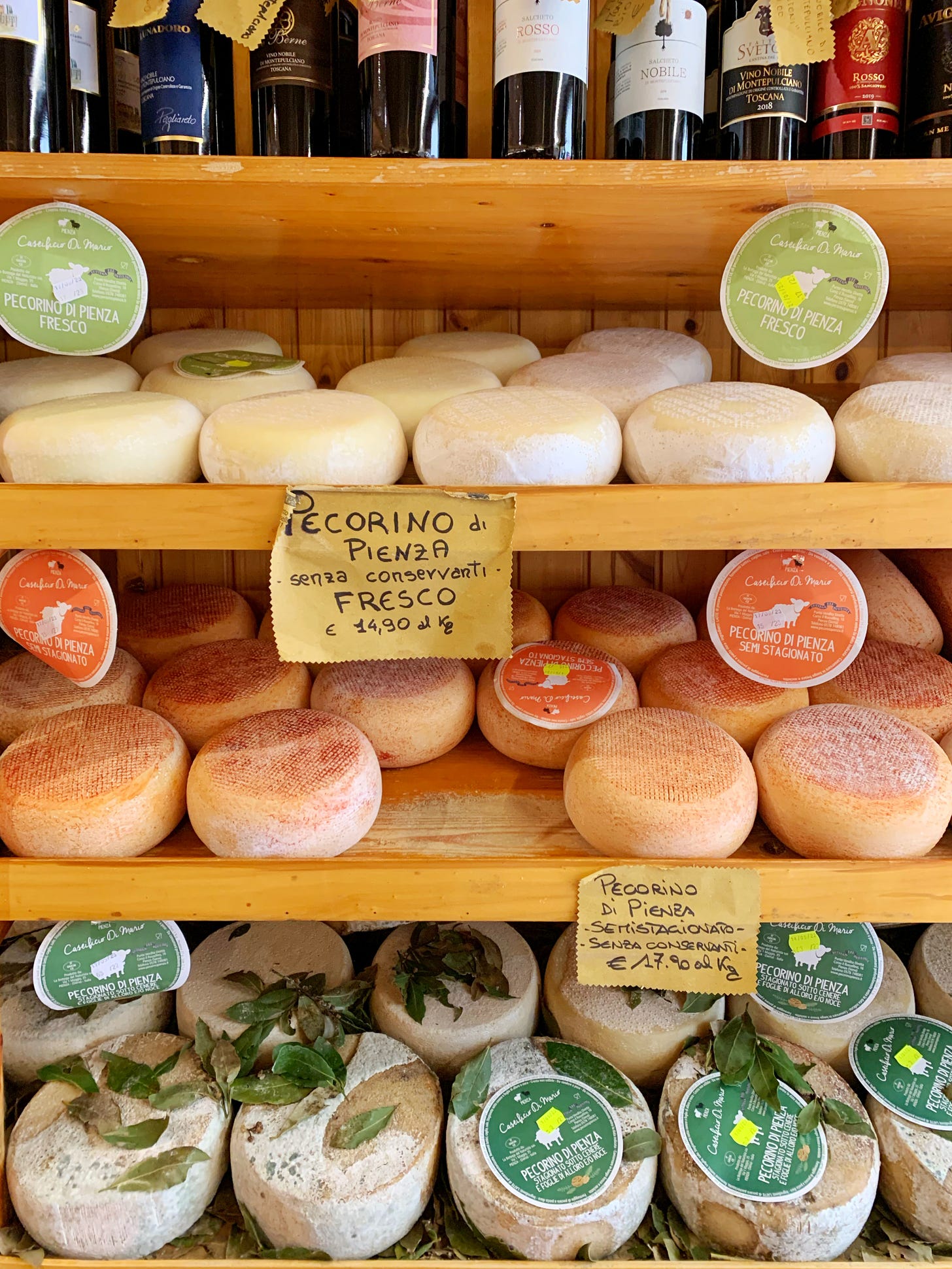Is there such a thing as an ideal city? In the late 15th century, Pope Pius II set out to create one, hiring architect Bernardo Rossellino to design it. The city in question is Pienza, set in the beautiful backdrop of Tuscany’s bucolic Val d’Orcia. Today Pienza’s historic center is inscribed on the UNESCO World Heritage List “as the first application of the Renaissance Humanist concept of urban design.” I’ve written a bit about Pienza for mainstream publications, but I think it deserves a more in depth look.
I’ve lost track of how many times I’ve visited Tuscany over the years, but I finally visited Pienza for the first time this year and was utterly charmed by it. Famous for its Renaissance architecture and a delicious sheep’s milk cheese called pecorino di Pienza, it would make a great day trip from Florence or a wonderful stop on a road trip through Tuscany, along with wine tastings at estates like Poderi Boscarelli, a small family-run winery in Montepulciano.
The historic center is small enough that you can see it in a day, but you might want to stay in the area for at least a night or two in order to explore the surrounding countryside. You likely wouldn’t plan a whole trip around a visit to Pienza, but if you’re trying to plan a trip to Tuscany, you might want to add it to your itinerary. It takes about an hour and a half to get there by car from Florence.
Marco and I visited a few months ago, during a stay at Borgo San Vincenzo, a new boutique hotel in a bunch of converted historic buildings in the countryside of Montepulciano. We parked just outside the historic center, which is full of old stone buildings with a golden-brown hue, and found our way to Piazza Pio II, the central piazza named for Pope Pius II. Born Enea Silvio Piccolomini and elected pope in 1458, he was a leading humanist and decided to redesign the Medieval town that already existed in order to better exemplify his humanist philosophy.
Looking at Piazza Pio II, you can see that the buildings are symmetrical and built on a human scale, unlike the taller, more imposing Renaissance buildings in Florence. Opposite the cathedral stands the town hall and across from the Palazzo Borgia stands Palazzo Piccolomini. We joined a guided tour of Palazzo Piccolomini in order to learn more about the historic residence and visit its beautiful hanging gardens.
Afterwards, we headed over to Trattoria La Buca delle Fate for lunch. They serve traditional Tuscan dishes, like ribollita (vegetable stew with day-old bread), pasta, and various cuts of steak, plus pecorino di Pienza in a variety of forms. Marco and I split the pecorino al forno (baked pecorino) as a starter, then I had the ribollita and he had a filet. They have a dessert cart up front, so after the meal you can go take a look and see what appeals.
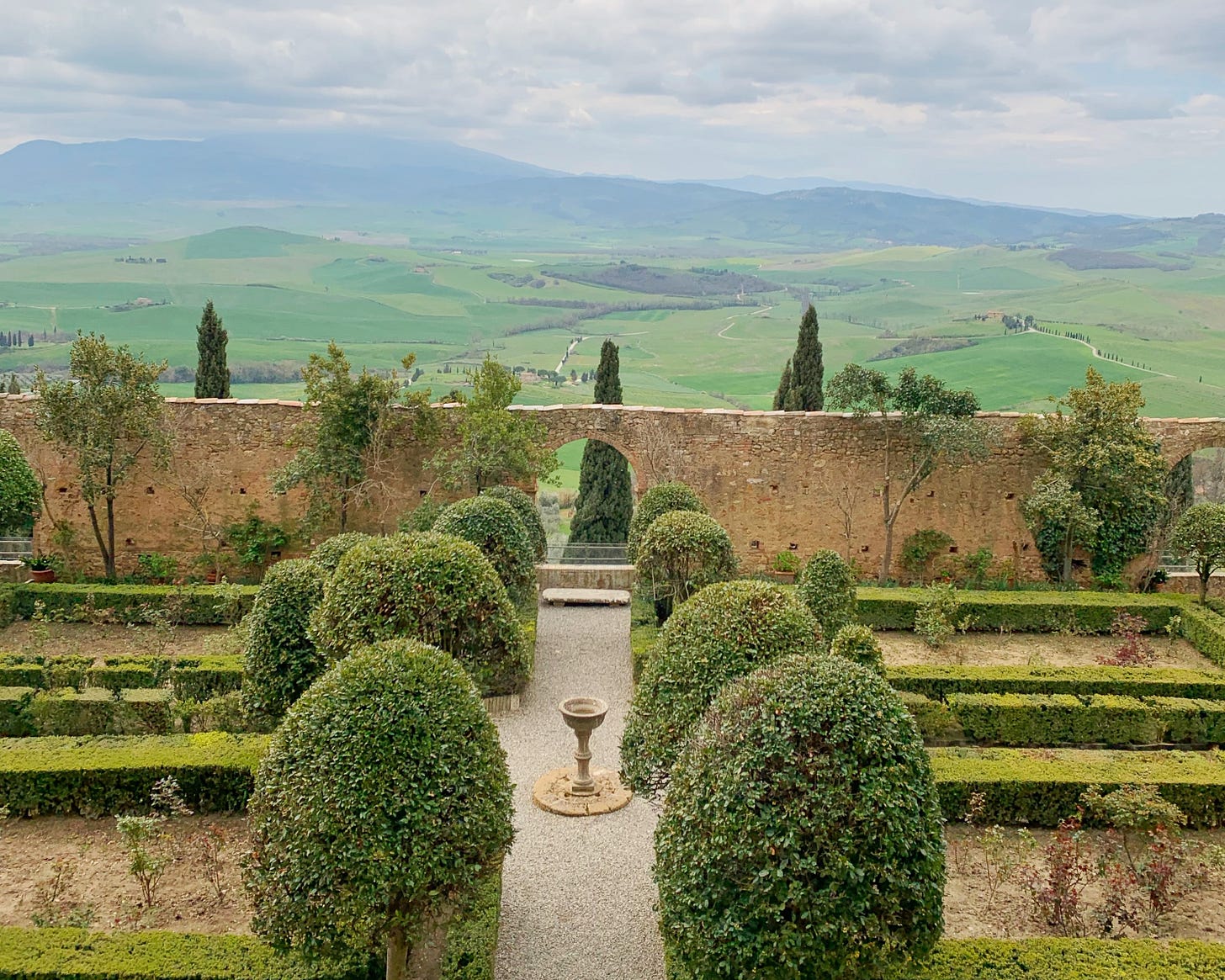
After eating that pecorino al forno for lunch, I decided we needed to buy some pecorino di Pienza to bring home, so we poked around the shops until we found one that appealed. For a small shop, they had a wide variety of pecorino—some fresh, some aged, some with herbs like laurel, and even one with a black rind. You can buy a vacuum-sealed hunk of cheese, so you don’t need to bring home a whole wheel. They also sell jams, artisanal pasta, and a variety of salami, including the traditional Tuscan one made with wild boar.
We also stumbled upon Officine 904, a shop selling leather bags, enamel jewelry made to look like scarab beetles, and colorful silk-and-cotton scarves with geometric patterns. Talking to Paolo Porcu Rodriguez, the owner/designer, we learned that his inspiration for the scarves comes from the patterns on the floors of churches and abbeys in the area. They look so fresh and modern that just looking at them, you would never know. I loved them so much that I bought a green scarf with a pattern inspired by the floors in the Basilica of Monte Oliveto on the spot and feel very chic when I wear it around.
That evening, we drove over to Podere il Casale for a cooking class. The owners, Sandra and Ulisse, are a Swiss couple who fell in love with the Val d’Orcia and decided to fix up a 300-year-old farm and turn it into a cheese-making enterprise and agriturismo. Sandra regaled the group with tales of what this part of Tuscany was like when she and her husband settled there in the early ‘90s, then brought us into her cozy kitchen for the class.
She taught us to make pici (a sort of thick spaghetti commonly found in Tuscany) with breadcrumbs, a roasted pork loin with vegetables, and ciambelline al vino rosso (rustic cookies with red wine). At the end of the class, we went into the restaurant’s dining room and ate the dinner we had prepared family-style with our fellow students.
So is Pienza an ideal city after all? With a population of around 2,000, it wouldn’t be considered a city nowadays, but rather a quaint little village. So it may not be an ideal city, per se, but it’s certainly an ideal stop on a trip to Tuscany.
Further Reading
I wrote about Tuscany—and mentioned Pienza—as part of a package about honeymoons for the December 2023 issue of Hemispheres. Check out the article here or see the full issue here.
Pienza is included in my roundup of five charming Tuscan towns for Noted by Quintessentially.
In this article about 7 places in Italy you should visit in 2023 for AFAR, I recommend combining Florence and the Val d’Orcia for a winning combination of bustling city and relaxing countryside.
If you’re thinking about doing that, you might want to check out my guide to 72 Hours in Florence.
You can see all the New Roman Times’ issues about under-the-radar destinations here.


